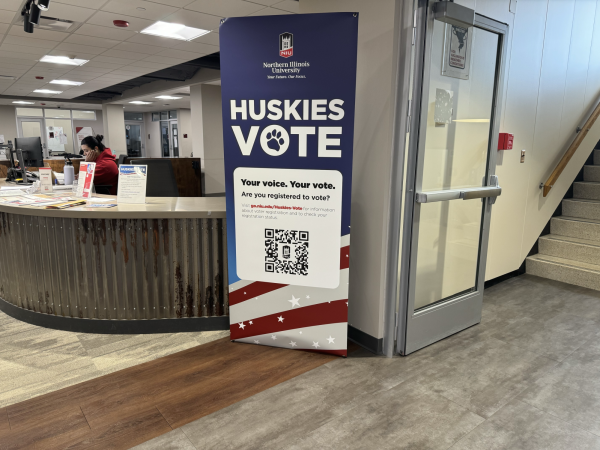Bus ads were candidates’ ‘best’ buy
April 16, 1990
Huskie buses were the most effective way to reach voters in the Student Association election, although not all candidates used them.
Vice Presidential candidates Dave Schaeff and Kathleen Rosenberg did not advertise on the buses, although President-elect Rob McCormack devoted nearly a quarter of his campaign expenses to bus advertising.
Janet Palmeri, co-chairman for bus advertising, said most candidates advertised on bus routes 3 and 4 because “that’s the best and most effective way to reach the majority of voters.”
Treasurer candidate Richard Parkman was the sole advertiser on the Route 5 bus, Palmeri said.
Palmeri said the five who did advertise on the buses spent more than $340. Vice President-elect Tanya Smith spent $94, the most any candidate spent on bus advertising, Palmeri said.
McCormack spent about $80 on bus advertising and his opponent John Fallon spent about $73, she said. Parkman spent about $73 and Treasurer-elect Mike Holy spent the least—$21.
“Payment arrangements were made and contracts were signed one week prior to the election,” Palmeri said. “Decisions on who gets to advertise is made on a first-come, first-serve basis.”
Palmeri is a member of Pi Sigma Epsilon, an NIU student organization that handles all Huskie Bus advertising. PSE gets 40 percent of the advertising profits, while the Student Association mass transit system gets the rest.
Advertising in the King Memorial Commons was a less expensive way candidates used to get their names spread around campus. NIU organizations can contract University Programming and Activities to use the two posts in the middle of the commons at no cost.
“Signs at this site are very visible to many students because of its central location,” said Vicki Bray, room reservationist for UP&A.
The SA does not give candidates money for campaigns, but does limit the amount office-seekers can spend to $500. Most funds either come from donations or from candidates’ pockets.












